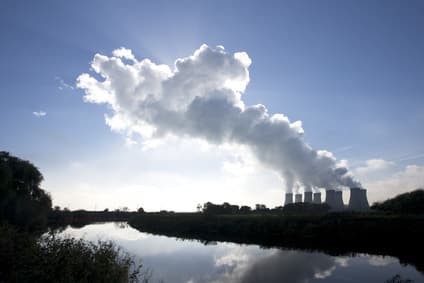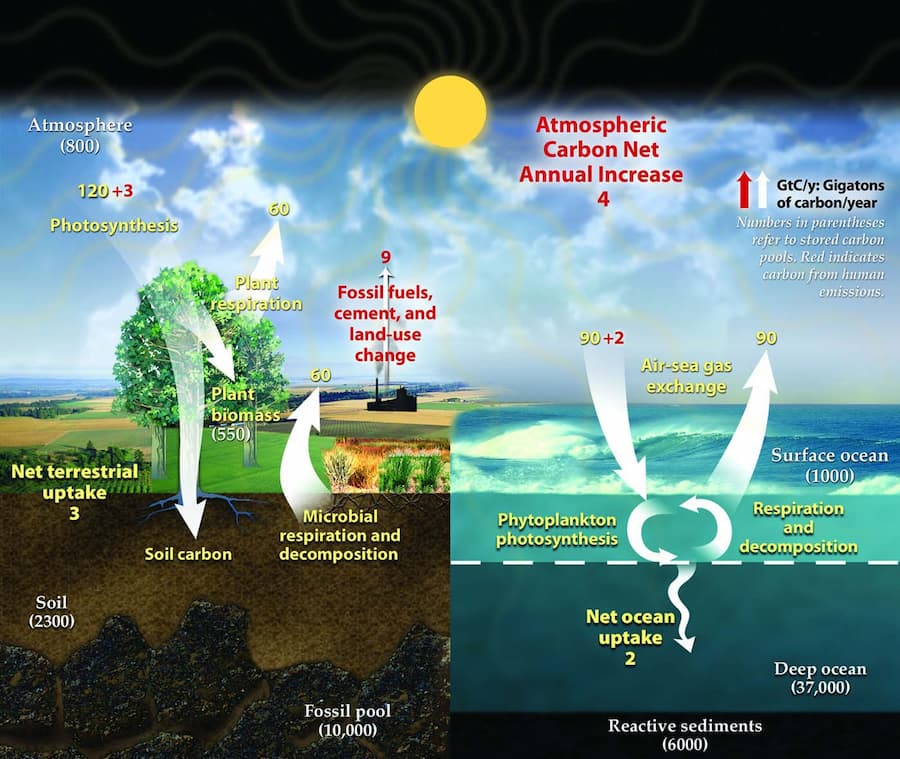Greenhouse Gases - The Main Issue
Greenhouse gases (GHGs) are responsible for the greenhouse effect. It is essential for you to realize that these gases are not equally harmful to the environment; some trap more heat than others. The most famous ones and the most important ones are carbon dioxide and methane.
Understanding Greenhouse Gases and Their Role in Climate Change
Greenhouse gases (GHGs) are atmospheric gases that trap heat from the sun, creating a "greenhouse effect" that warms the Earth. The primary greenhouse gases include carbon dioxide (CO₂), methane (CH₄), nitrous oxide (N₂O), and fluorinated gases. These gases are naturally present in the atmosphere and are crucial for maintaining the Earth's temperature at a level suitable for life. Without them, our planet would be too cold to sustain most forms of life. However, human activities, particularly since the Industrial Revolution, have significantly increased the concentrations of these gases, intensifying the greenhouse effect and contributing to global warming.
Carbon dioxide (CO₂) is the most prevalent greenhouse gas emitted by human activities, primarily through the burning of fossil fuels such as coal, oil, and natural gas for energy and transportation. Deforestation and various industrial processes also release substantial amounts of CO₂. Methane (CH₄) is another potent greenhouse gas, with a much greater heat-trapping capability than CO₂, although it is present in smaller quantities. Methane is released during the production and transport of coal, oil, and natural gas, as well as from livestock and other agricultural practices and the decay of organic waste in landfills.
Nitrous oxide (N₂O) is emitted from agricultural and industrial activities, as well as during combustion of fossil fuels and solid waste. Fluorinated gases, although less common, are extremely potent greenhouse gases used in various industrial applications, including refrigerants, solvents, and manufacturing processes. These gases can have a global warming potential thousands of times greater than CO₂ and can remain in the atmosphere for centuries.
The increased concentration of greenhouse gases in the atmosphere enhances the natural greenhouse effect, leading to more heat being trapped and a subsequent rise in global temperatures. This warming contributes to a range of climatic changes, including more frequent and severe weather events, rising sea levels, and disruptions to ecosystems and agriculture. Addressing the issue of climate change requires reducing emissions of these greenhouse gases through sustainable practices, renewable energy adoption, and improved energy efficiency. By understanding the role and impact of greenhouse gases, we can better formulate strategies to mitigate their effects and protect our planet for future generations.
Water Vapour
In fact, water vapour is the most abundant of these gases but merely reacts to climate change.
In other words, when the atmosphere is warm, there is more water vapour. Thus there is a higher possibility of clouds and precipitation.
This is the reason why climate change will cause changes in precipitation and weather patterns, one of the differences between climate change and global warming.
Chlorofluorocarbons
Chlorofluorocarbons (CFCs) are synthetic (man-made and thus can't be found in nature).
Since it was so destructive to the ozone layer, it was banned and is now largely regulated.
They caused holes in the ozone layer, which fortunately have repaired themselves in recent decades.
The banning of CFCs was the most successful environmental act so far.

Nitrous oxide
Nitrous oxide is a potent GHG often produced for the use of commercial and organic fertilizers, nitric acid production, fossil fuel combustion and biomass burning.
Methane
Methane is often produced through agriculture, decomposition of wastes in landfills and manure management for livestock. This gas is very harmful to the atmosphere but is emitted in small quantities.
Note: This image shows carbon dioxide poisoning which happens only when the volume of carbon dioxide is high. In the atmosphere, the volume of carbon dioxide is about 0.04% (Wikipedia article for more information).
Carbon Dioxide
Carbon dioxide takes up a small percentage of these gases and is naturally emitted through cellular respiration and volcanoes.
By this natural process alone, carbon dioxide will increase very slowly over time or remain constant.
However, humankind has drastically increased the concentration of carbon dioxide from 280 to 413 parts per million in the last 200 years (Source). This rapid change will have numerous effects on humankind and precious ecosystems.
Carbons from fossil fuels combine with oxygen to create carbon dioxide. Carbon dioxide is emitted primarily through the use of transportation, industries, energy consumption, agriculture and deforestation.
By reducing our carbon footprint (how much carbon dioxide we emit personally), we can help solve the climate crisis.
Essentially, it is crucial for us to determine the causes of climate change in order to do so.
Annual changes are measured in gigatons of carbon per year (GtC/y)
List of Greenhouse Gases
- Carbon Dioxide
- Chlorofluorocarbons
- Hydrochlorofluorocarbons
- Hydrofluorocarbons
- Methane
- Nitrous Oxide
- Ozone
- Perfluorocarbons
- Sulfur Hexafluoride
- Water Vapour
Further Reading and Sources

From National Academies
Join the Community and Newsletter (4500 Subscribers)
You can subscribe to my Substack Page or see the archives of previous posts. More great content coming soon!
Recent Articles
-
Quotes on Climate Change
Nov 24, 25 07:29 PM
Here is a list of quotes on climate change divided into different categories, many of which include people you have previously heard of. -
Climate Change Guide
May 09, 25 08:36 PM
The Climate Change Guide is your guide to a more sustainable future, and will provide you with all relevant information on mankind's greatest challenge. -
Laurent Cousineau
May 09, 25 08:23 PM
Here is information about the founder of the website Climate Change Guide, Laurent Cousineau. He created it in August 2011. -
Climate Change Quotes by Scientists Around the World
Aug 24, 24 02:01 PM
Explore impactful climate change quotes by scientists. Discover the wisdom and insights of experts advocating for a sustainable future.






